It is normal for people to want a visually pleasing lawn without putting in a lot of effort and dedication. This ambition, however, can only be fulfilled with proper lawn care techniques such as aeration, overseeding, and mowing. All of these things work together to make your lawn lush, green, healthy, and complete. However, as with anything, people have their doubts and questions. One of the most common questions that I get is: can I mow right after aeration? Keep reading to find out!
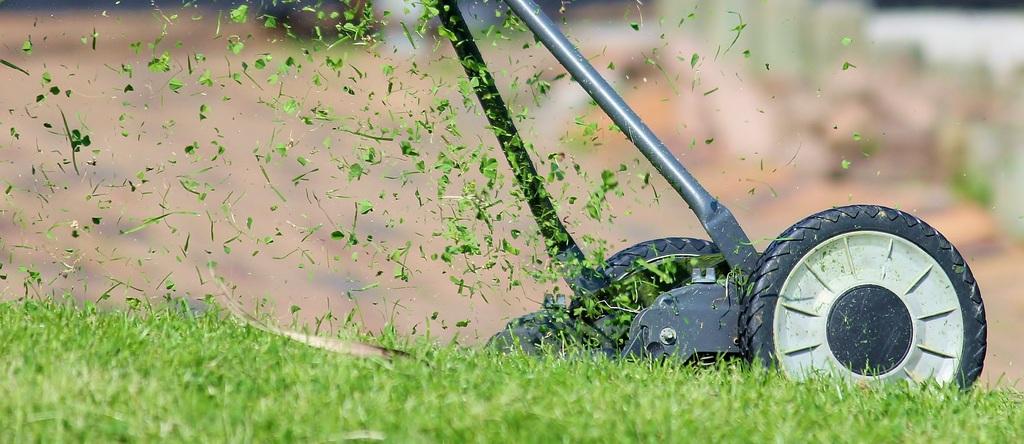
Although it’s not as bad as many sources claim, try to avoid mowing right after aeration!
We’re here to help you with lawn care, not bury the lede. Therefore, for those not interested in reading a treatise on how to aerate a lawn properly, the short answer is YES, you can mow right after aeration. It is not the smartest thing to do, and you could end up breaking your mower in the process (though that’s improbable). However, you can do it!
The main reason you should not mow your lawn immediately after aeration is that you’re better off mowing before you aerate. The process of aeration makes small holes in soil. This means that if you cut your grass after aeration, the dirt removed may fill these spaces again and keep oxygen and nutrients from getting to the roots.
That said, there is a lot more to lawn aeration and mowing than this. So, let’s take a moment to discuss aeration in a bit more detail!
What Is Lawn Aeration?
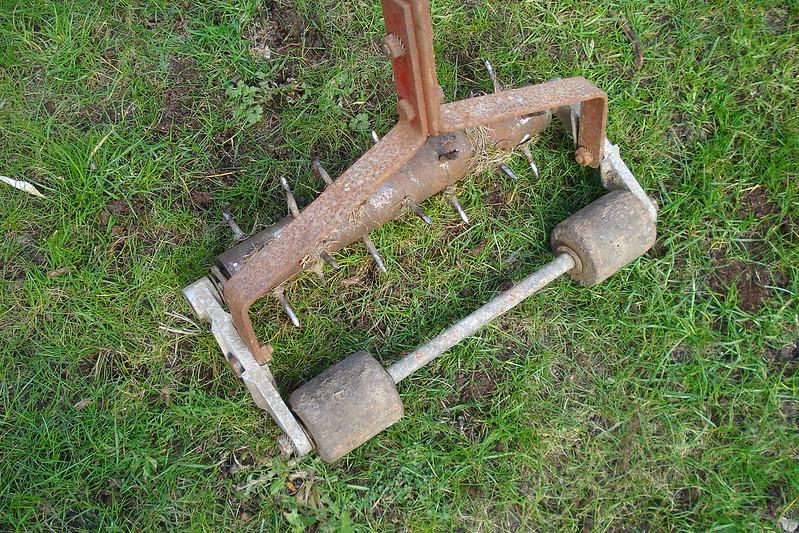
Lawn aeration is the process of perforating the soil and allowing water, air, and nutrients to pass through.
Aerating your lawn involves making holes in the soil, which opens the pores of your soil and makes it possible for more oxygen and water to reach the roots of your grass.
It is an excellent example of creative destruction; it is the process of removing chunks of your yard for the grass to grow better. Although this can sound a little bit brutal, it is absolutely vital to aerate your grass if you want to keep the health of your lawn intact.
When lawns are not appropriately aerated, the soil will become very compact. When the soil is compacted, oxygen and nutrients have difficulty reaching the grassroots. In other words, if you do not aerate your grass for an extended time, it will not receive sufficient nutrients and water, regardless of how frequently you fertilize and water it.
RELATED: Aeration & Overseeding For Lawns: Is It Worth It? A Comprehensive Guide
Why Should You Not Mow Right After Aeration?
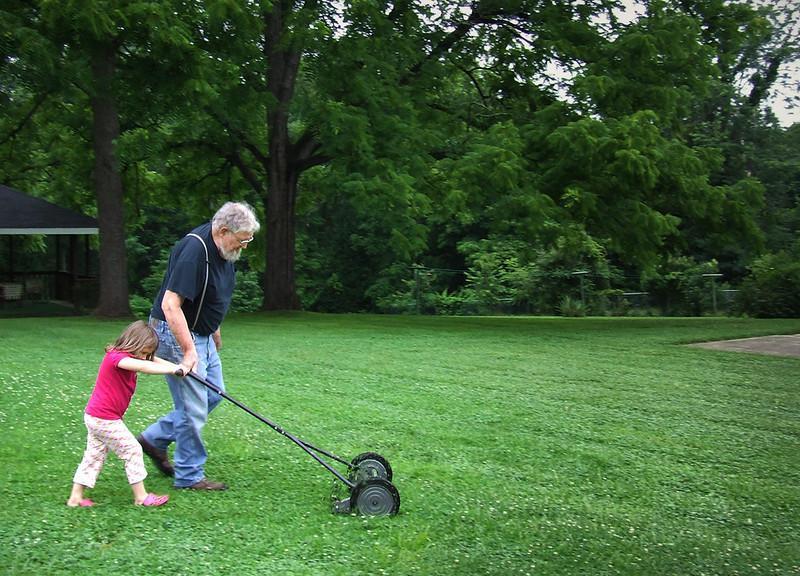
Anyone who has ever aerated their grass knows that you shouldn’t mow right after.
It is not a good idea to mow right after aerating. It doesn’t matter which form of aeration was used; this can start to undo the good that aerating has done for your grass.
For instance, you cannot mow the grass after it has been aerated because the fertilizer and seeds need some time to become established in the soil and also because mowing the soil after aeration may cause the soil to become compacted.
When you mow a lawn after it has been aerated, you risk preventing the gass seeds from germinating and reducing the amount of oxygen and water available to the soil.
Mow right after aerating is not practical and provides no benefit. It is highly recommended that you mow your lawn before you aerate the turf.
This makes it much easier for the aerator machine to do its work, prevents it from becoming clogged, and makes it possible to overseed a lawn more efficiently.
Mow Right After Aerating is a practice that can result in many different issues. Some of them are listed below:
- While mowing usually works best when the grass is dry, aeration is best done on somewhat moist soil. Therefore, it is best to mow the lawn first, water it, then aerate it after a few days, and finally overseed it.
- It’s possible that the plugs left behind from the aeration process could become trapped in the mower blades, where they would create a mess and cause the blades to get dull or stuck.
- In addition to mowing the lawn, you should never walk on it when it has recently been aerated. You will wind up re-compacting the soil, which will result in the loss of many of the benefits that were gained through aerating the soil.
- The grass blades that are cut off during the mowing process will reduce the efficiency of the aeration and make it significantly more difficult to overseed your lawn.
RELATED: How To Overseed A Lawn Without Aerating? A Comprehensive Guide
Types Of Lawn Aeration

Core aerators are far more effective than spike aerators at breaking up severely compacted soil.
Soil compaction problems can be solved by aeration, and the two common ways to aerate soil are core aeration and spike aeration. Core aeration is usually deemed to be more effective than spike aeration. Nonetheless, let’s talk about these different types of lawn aeration!
Core or Plug Aeration
Professionals almost always perform plug aeration since they have the required equipment. Plug aerators remove soil “cores” from your yard. Core aeration lowers soil compaction by establishing a channel for oxygen, water, and nutrients to infiltrate the soil. Core aeration may leave your lawn with little holes, but these will be filled in with denser, healthier grass.
Core aeration is the technique that lawn care professionals choose most often as it effectively aerates the soil, which provides root systems with access to nutrients and helps the ground remain in good shape over the long run.
Spike Aeration
A spike aerator digs holes in the ground to loosen the soil. Spike aerators don’t take any dirt out of the ground as plug aerators do. Instead, they just drill holes in the ground to remove compaction. Spike aeration can be carried out by hand (or, worse yet, with foot), but experts in lawn care generally advise against it.
The reason is that it forces the soil particles apart to make room for the spike to enter the soil, but the area between the spike holes becomes more compressed. In other words, spike aeration momentarily relieves compaction by loosening the soil, but over time, it causes compaction to increase and worsen.
RELATED: The Best Time Of Day To Fertilize Your Lawn | A Comprehensive Guide
How To Tell If Your Lawn Needs Aeration
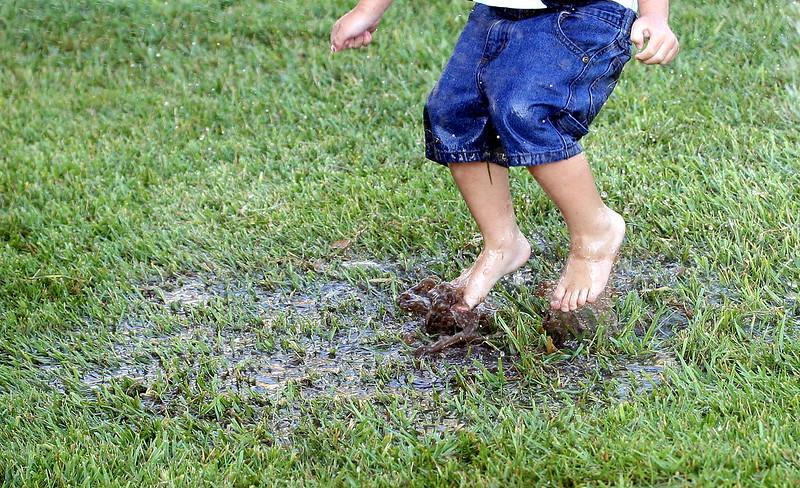
The most prevalent cause of lawn waterlogging is soil compaction.
When people walk on lawns regularly, they compact pretty quickly. Once your soil starts to compact, oxygen penetration decreases, and the harmful substances your soil must release can’t escape. As a result, lawns with compacted soil never seem healthy or appealing.
Here are a few telltale signs of a lawn needing aeration:
Soil Compaction Test
Check the soil’s compaction with a sharp object, such as a pencil or screwdriver. The soil is fine if you can put it in the soil without much trouble.
However, if you struggle, the soil is probably compacted.
Change In Turf Color
If you find that your lawn has more yellow or brown areas than usual, this could be an indication that it needs to be aerated. However, this only holds true if your lawn is receiving enough water; if there is a dry spell, the color will change.
Standing Water
The presence of puddles or water still standing on the grass is a sign of compacted soil. This indicates that it is difficult for water to penetrate the ground and reach the roots.
What Is The Best Time To Aerate A Lawn?
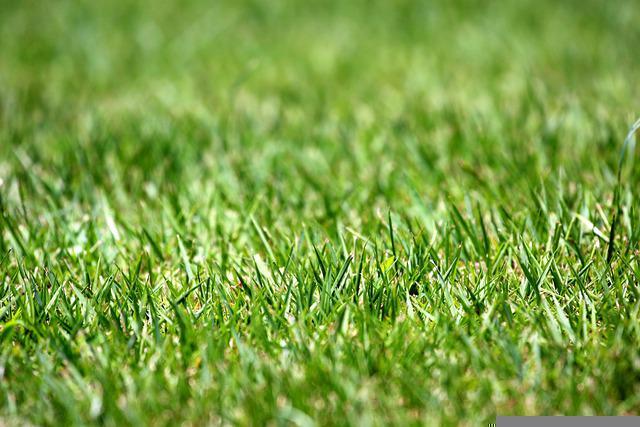
The best time to aerate a lawn depends on grass type, location, and weather.
Regardless of where you live or the type of turf grass you’re dealing with, aeration can improve the health and appearance of your lawn. The key is knowing the ideal times to aerate the product. The best time to aerate a lawn depends on where you live, weather, and grass type. This is explained further in the paragraphs below.
Best Time To Aerate Cool-Season Grasses
If you have a lawn made of cool-season grass, such as fescue or bent grass, fall is the optimum time to aerate it, and you should try to do it at least one month before the first frost of the season.
Best Time To Aerate Warm-Season Grasses
Aerating warm-season grasses like Bermuda and Zoysia in the spring, between April and June, is the most effective way to improve their health and appearance.
Dethatching Vs. Aeration
Both dethatching and aerating the grass are intended to achieve the same thing, yet, the two processes accomplish it in quite different ways.
When dethatching a lawn, a special machine is pushed through the grass, pulling the thatch layer up and out of the lawn. Aerating a lawn, on the other hand, involves punching holes into the soil in order to achieve the desired effect.
So, which one is the better option? In most cases, aeration is preferable to dethatching, which can destroy healthy grasses, especially when not performed by specialists.
Common Aeration & Overseeding Mistakes
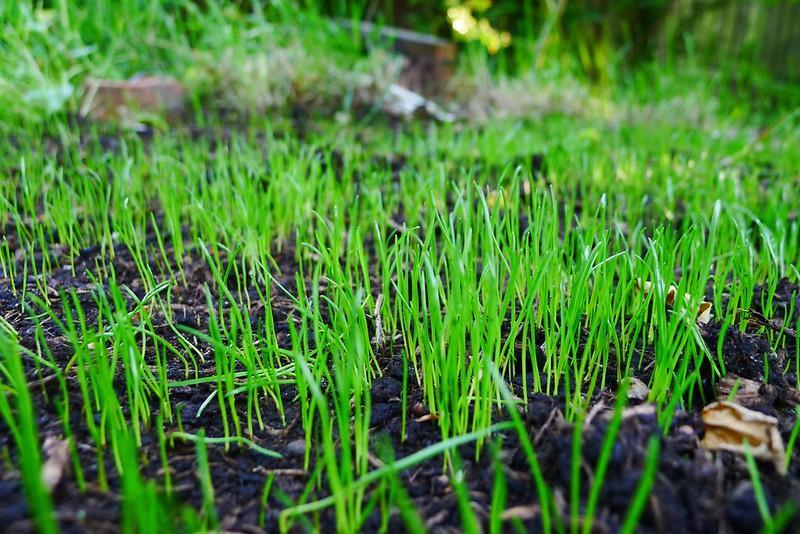
The ideal time to overseed is immediately after aerating the soil.
If you want your grass to look thick and healthy, you should make sure to avoid making these common mistakes with aeration and overseeding:
Mowing Too Early
Your seedlings will need time and the appropriate environment to grow once you plant them. They’ll need to adapt and establish roots before the first mow. Try to refrain from mowing your lawn during this delicate phase of growth and limit foot traffic.
Early Use Of Herbicides
During the first few months of caring for your lawn, applying herbicides or other chemical products is not a good idea. The new grass is considerably more susceptible to the effects of these products, and as a result, it can weaken or die.
Lack Of Lawn Care
After aerating and overseeding the lawn, it is essential to take measures to maintain adequate moisture and nutrition in the soil. This encourages the seeds to begin germinating and gives them a head start in establishing themselves in the soil.
Using Wrong Equipment
We’ve all seen the do-it-yourselfers stomping around on their lawn, poking holes in the ground. They think aerating is just creating tiny holes in the soil. If you do not know what you are doing, you might end up doing more harm to your lawn than good.
Aerating & Overseeding At The Wrong Time
The best time to aerate is when new grass has the most possibility of flourishing in your area. Aerating and overseeding the lawn either too soon or too late could be detrimental to the lawn’s health and can cause patches to form on your lawn.
How Soon Can I Mow My Lawn After Aeration?
Now that you understand not to mow or walk on your lawn following aeration and overseeding, you’re probably wondering when it’s safe to do so again. Fortunately, you won’t have to wait indefinitely. The idea is to ensure that the seeds can sprout and the soil can reconstruct itself before you start pounding all over the place.
It is recommended that you wait for at least a week, but most professionals will advise you to wait for two weeks. At this time, the height of the lawn is probably going to be somewhere between four and five inches, which is not an issue at all.
What Should I Do Following Lawn Aeration?
It doesn’t matter what technique was used to aerate your lawn; after it has been done, you can do a few activities to get the most out of your freshly aerated lawn.
Overseed
Just like fertilizing after aerating, this is the best time to reseed. Aeration aids in the greatest possible start for the fresh seeds by assisting with germination. The two-week wait on mowing should be followed if you decide to reseed following aeration.
Water
The three weeks following aeration and seeding call for daily irrigation of your lawn. Your new grass is in a crucial growth stage right now. Therefore, you should hydrate the roots as much as you can for the best growth.
Fertilize
The best time to fertilize is immediately following aeration. It allows the fertilizer to sit on the top layer and within the aerated holes. The grass is also in a position to get the most from fertilizer.
Final Thoughts
Aeration is one of the most effective lawn care treatments available. Just keep in mind that you shouldn’t mow your grass too soon after you’ve aerated your lawn.
As long as you avoid doing that and water your grass on a consistent basis, you shouldn’t have any problems with its health and growth. In addition, you should avoid walking on your lawn for at least a week or two after it has been aerated.
Frequently Asked Questions (FAQs)
Should you aerate before or after mowing?
You’re almost always better off mowing your lawn before aeration to avoid damaging your mower. For the best results, experts advise cutting your lawn short—between 1.5 and 2 inches above the ground—before aerating it.
What should I do immediately after aeration?
After a lawn has been aerated, you must refrain from walking on it. Instead, immediately after aerating your lawn, apply fertilizer to get nutrients into the plant roots. Then, you should reseed your grass if required or desired.
Should I pick up plugs after aerating?
It’s uncommon for lawn aeration providers to clean the plugs! Within a few days, the soil plugs break down and dissolve, adding nutrients to the soil. However, using a rake to break up those plugs is okay if you can’t stand the sight of them on the lawn.
How long does it take lawn aeration to heal?
Your lawn will experience some degree of tension due to the aeration process. However, with the proper care, your lawn will recover faster and be better within 4 to 6 weeks.
Should I add sand to my lawn after aeration?
Sand helps with aeration and soil drainage. In terms of the grass’s root structure, both of them are significant aspects. If your lawn is prone to being waterlogged or your soil is clay, adding sand after aeration will help with drainage and fill in the holes.
Sources For Further Reading
Lawn Aeration and Overseeding – University of Illinois Extension Service
Mowing, Dethatching, Aerating, and Rolling Turf – Purdue University Extension Service
Fall maintenance tips for a healthier spring lawn – University of Minnesota Extension Service
Editor’s Recommendations
Crushed Stone & Gravel Grades | How To Determine The Correct Size For Your Project?
Pea Gravel Patio 101: Pros, Cons, Costs, Installation Guide & Much More!
How To Plant Grass Seeds On Hard Dirt For Best Results? A Simple & Easy Guide







